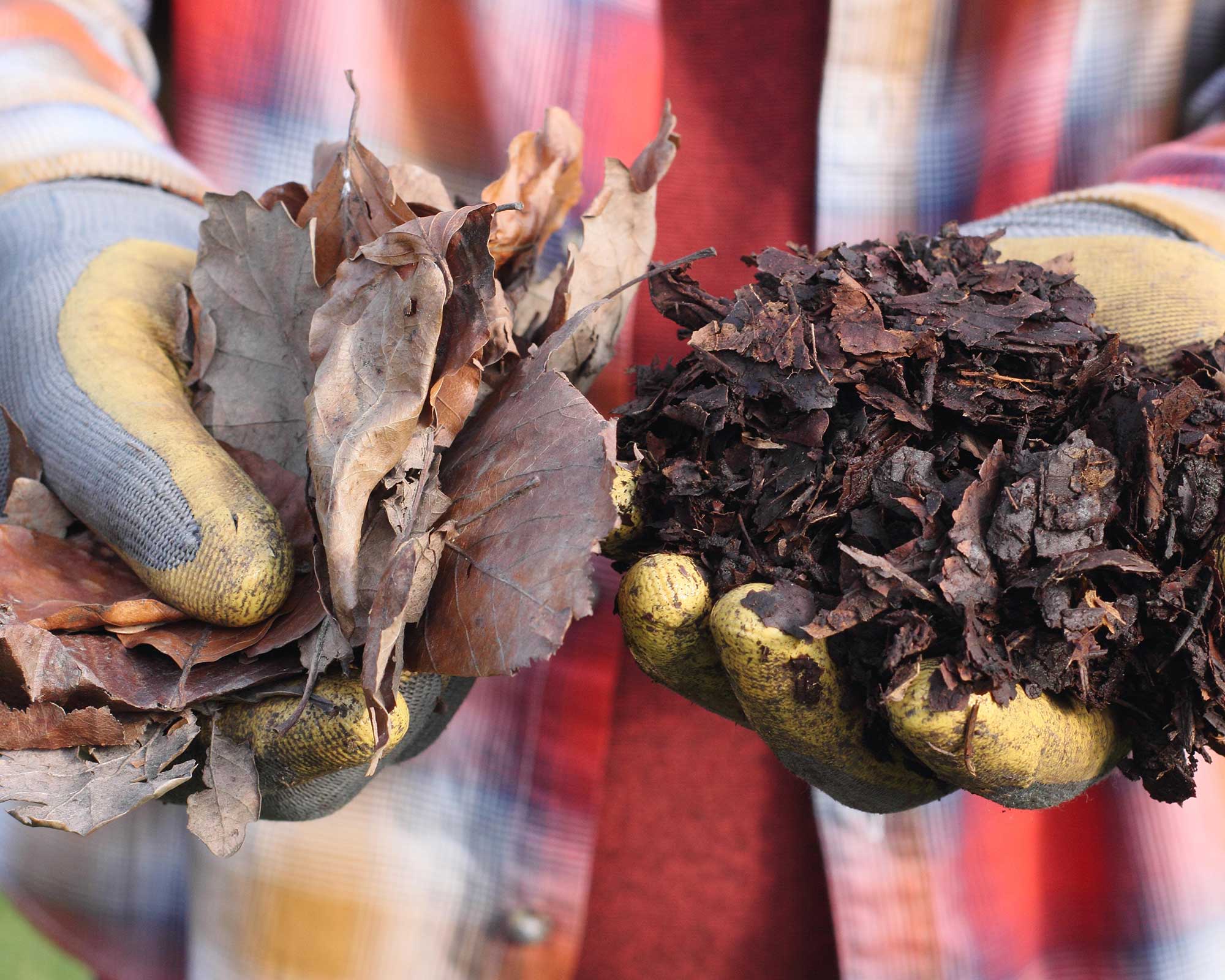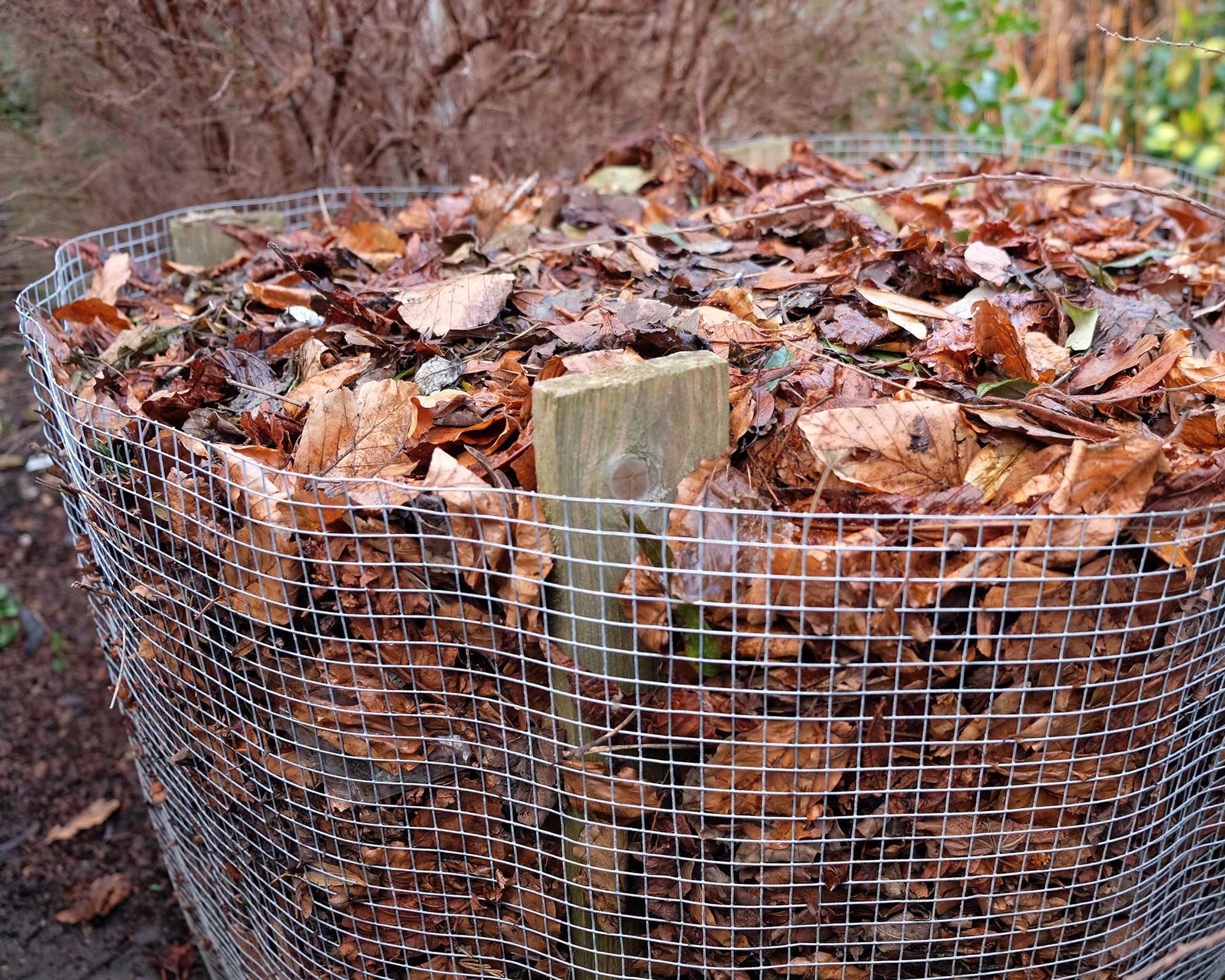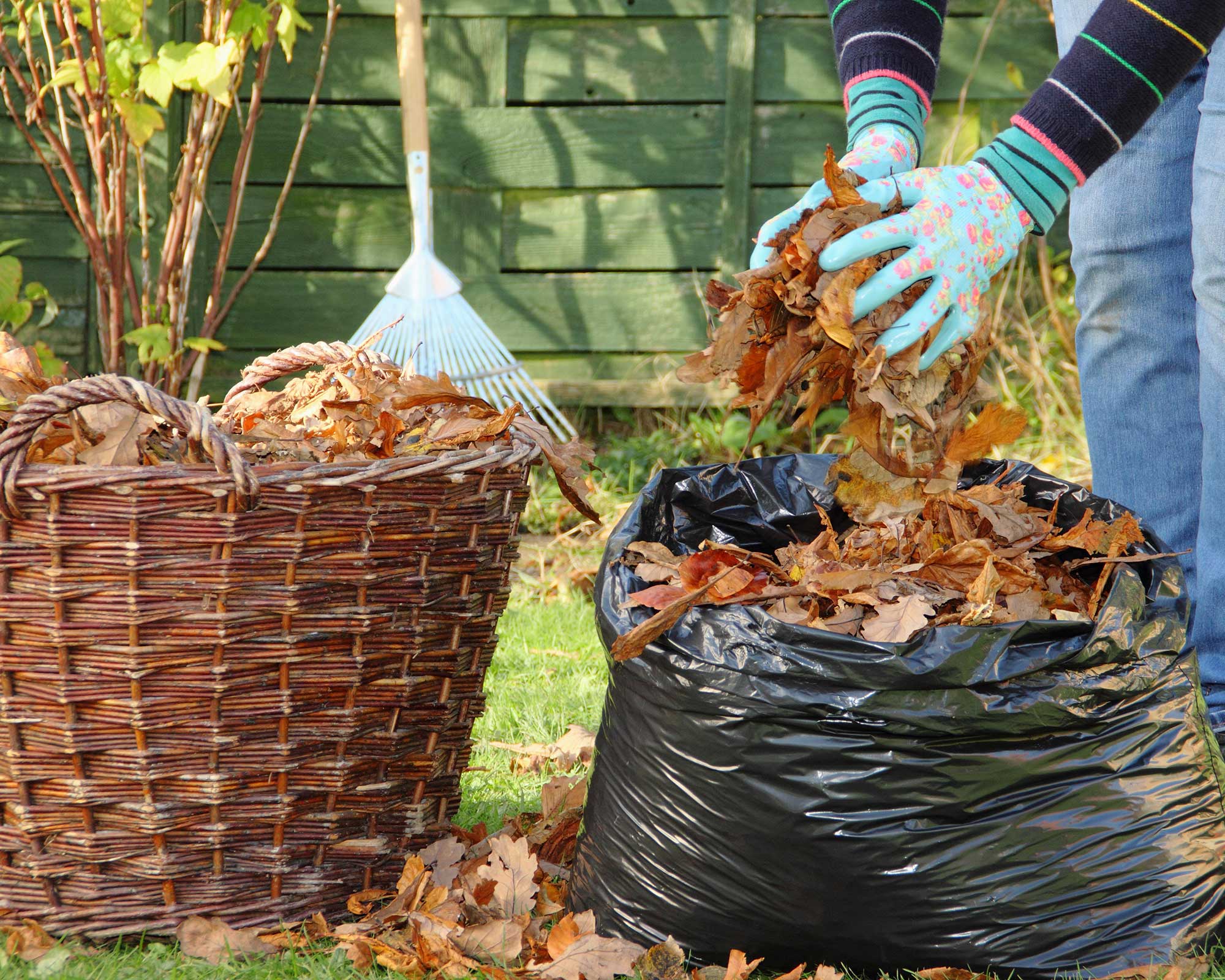How to make leaf mould: top tips for turning autumn leaves into a garden asset
Learn how to make leaf mould and you can give your flowerbeds a boost for free. Here's everything you need to know


Learning how to make leaf mould should definitely be on your list of autumn garden jobs. It's really easy to do and there are so many benefits. Plus, it won't cost you a penny.
That thick layer of fallen leaves covering your lawn, flowerbeds and paths needs to be swept up anyway. Otherwise, it will smother grass, encourage mould on plants, is slippery underfoot, and is a haven for slugs and snails. But, instead of chucking the spent leaves on the compost heap or disposing of them another way, why not store them in a bin bag or leaf mould bin? This will allow them to break down into the wonderful humus-rich soil conditioner known as leaf mould, that you can use all around the garden.
To help you get started with your own, we've brought together lots of top tips on how to make it, where to use it, and why it's so beneficial for your backyard. And if you want to have a go at composting, too, we've got a separate guide that has everything you need to know.
What is leaf mould?
Small quantities of leaves can be added to your ordinary compost pile (you can find the best compost bin for your budget in our buying guide). But, the vast piles we get in autumn would upset the balance. For this reason, they're best treated separately and used to create leaf mould.
Essentially, leaf mould is where leaves are collected and stockpiled en masse, and then allowed to break down naturally over the next year or so by fungi. This is different from normal garden compost, which depends on the action of bacteria. During that time, nothing else is added to the mix and it doesn't really need tinkering with like traditional compost. In fact, once it's bagged up (or piled up in a bin), you can pretty much forget about it until it's ready to use.
Eventually, you'll be rewarded with lots of lovely, crumbly stuff to use in the garden.

What are the benefits of leaf mould?
Leaf mould isn't rich in nutrients like normal compost, but it is still beneficial. For starters, it's excellent for mulching flowerbeds and borders. 'It suppresses weeds and its dark tones offset winter plants,' says Ruth Hayes, gardening editor of Amateur Gardening.
It can also be combined and sieved with homemade compost to make a perfect sowing and growing mixture. 'Sieve it extremely finely for tiny seeds,' says Ruth.
Leaf mould is a useful soil improver, too. 'Dig it into your beds to improve the water-holding properties of thin, sandy soils and break up claggy clay soil,' says Ruth.
Finally, if you're looking for wildlife garden ideas, leaf mould is definitely one to try. 'Leaf bins are a haven for invertebrates as well as hedgehogs, toads, and slow worms,' adds Ruth. 'Take care when forking them over not to injure or disturb any residents.'
- If you're a little unsure on compost vs mulch, or even compost vs topsoil, our guides explain all.

How to make leaf mould
- Collect leaves from your own garden and if you don't have enough, offer to do friends’ or neighbors' gardens as well. You can rake them up, but if you have a rotary lawn mower with a grass box it's easier to rake them all onto the lawn and run over them with the mower. This shreds the leaves as it collects them, which speeds up decomposition – and is particularly useful for bigger, tougher leaves. If you need an update, you'll find plenty of top picks to choose from in our best lawn mower buying guide.
- Next, you need to put them somewhere to store. 'There are two main ways of storing leaves,' says Ruth Hayes. 'You can construct a permanent bin using stakes wrapped around with wire mesh. Alternatively, get a black plastic bin liner, make holes in it, and pile it full of leaves. Sprinkle some water in it before knotting the top and stowing it away somewhere where it can't be seen.' You can also buy jute sacks for making leaf mould. You don't have to punch holes in these, but otherwise use them in the same way.
- 'It will take at least two years for your leaves to rot down,' continues Ruth. 'If it takes longer, fork over the leaves occasionally and dampen them during long, dry spells.'

What are the best leaves for leaf mould?
The best leaves to use for leaf mould are small types from oak, beech, hornbeam, lime and hazel trees, all of which break down easily.
Thicker leaves like sycamore, walnut, and horse chestnut take longer. However, 'you can speed up the process by shredding them or going over them with a lawn mower before collection,' says Ruth Hayes of Amateur Gardening.
'Evergreen leaves are best shredded and added to your compost heap, where they will break down faster than in a leaf mould bin,' she continues. 'Keep pine needles in a separate place and use them as mulch for ericaceous plants that thrive in acid soils. They mainly drop in spring, unlike deciduous leaves.'
- If you're looking to give your garden a boost quickly, then our guides on hot composting and worm composting are well worth a look.

How do you make a leaf mould bin?
You can store your leaves in a dedicated leaf mould bin rather than in bags. It's simple to do:
- You can make a leaf mould bin out of chicken wire or steel mesh supported by wooden stakes. Or, check out builders' skips for wooden pallets and build one from them. You will need four to fix together in a square. Alternatively, you can buy a square wire mesh compost bin. Site the bin on the soil, somewhere out of the way.
- Load in your leaves and spread them evenly, but don't pack them down hard. Ruth Hayes suggests covering the top with old carpet to help retain moisture and raise the temperature.
- If they get dry, water them. But otherwise, that's all you need to do. Additives like Garotta, which speed up garden compost decomposition, won't help leaf mould to break down.
- In a year or so, the pile will have shrunk down considerably. Beneath an outer casing of brown leaves you'll find wonderfully crumbly black or brown compost-like material.

Should you turn leaf mould?
Although it's not strictly necessary to turn the leaf mould as you would compost, it can help the decomposition process, particularly if yours is taking longer than expected.
If you're making your leaf mould in a bin liner, simply give it a good shake every few weeks or so. If you're using a bin, use a garden fork to carefully turn it.

Are there any common problems with using leaf mould?
It's worth bearing in mind that leaf mould can become invested with weeds. If this happens, you can then spread the weeds around your garden accidentally when you go to use it.
For this reason, try to avoid using leaf mould on very formal areas of the garden where weeds would be a problem, as advises the RHS.
If you do need to tackle the pesky intruders (and most gardeners inevitably do at some point), our guides on how to get rid of weeds and how to get rid of lawn weeds will come in handy.

More advice for making leaf mould, including tips from Monty Don
- Collect large volumes of leaves to make leaf mould. The process works best with big amounts, and the leaves shrink a lot when they decompose.
- Keep the leaves moist. If the weather is dry for long periods, water your leaves – preferably with rainwater from a water butt – a must-have for sustainable gardens.
- Don't burn autumn leaves – it's a waste of a good resource and environmentally damaging. If you can’t make leaf mould, collect the leaves and take them to the tip for green-waste recycling.
- Avoid mixing large amounts of evergreen leaves or conifer needles in with deciduous leaves, as this will slow the decomposition process.
- Remember, you won't be feeding plants by adding leaf mould to the soil. Leaf mould is an improver of soil structure, so plants will still need some kind of fertilizer to boost growth. Our guide on fertilizing plants is full of useful advice.
- Collecting fallen leaves is a project rather than a one-off task, so remember to keep at it throughout fall.
- Avoid mowing over wet leaves which can clog your machine. Gardening expert Monty Don advises to sweep and rake dry leaves into a line, then mow them before soaking them later using a hose.
- Feeling impatient? You can use part-decomposed leaf mould as mulch as early as spring, Monty says.

Lifestyle journalist Sarah Wilson has been writing about gardens since 2015. She's written for Gardeningetc.com, Livingetc, Homes & Gardens, Easy Gardens and Modern Gardens magazines. Having studied introductory garden and landscape design, she is currently putting the skills learned to good use in her own space where the dream is establishing a cutting garden.
